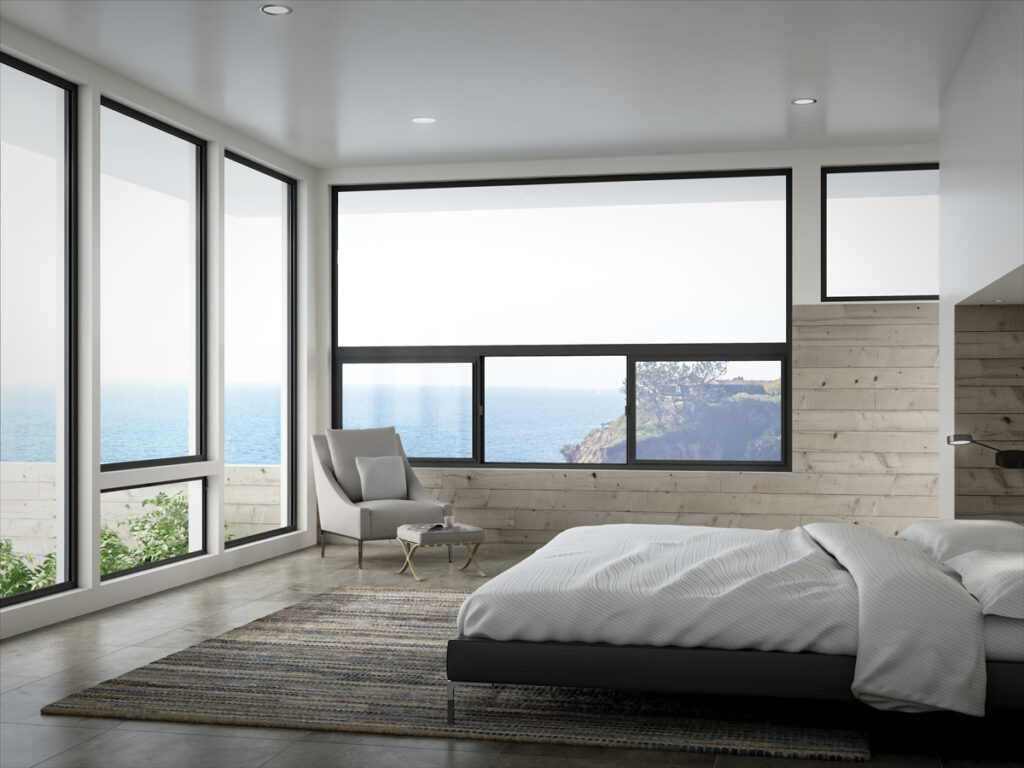Did you know that the heat gained and lost through windows is responsible for 25 to 30 percent of residential heating and cooling energy use? Whether you’re selecting windows for a new home or replacing your current windows, take some time to explore energy-efficient windows. Several factors must be taken into consideration when choosing windows that will work well in your home and your climate. But by choosing the right windows, you can lower your energy usage, save money, and make your home more comfortable.
Things to Consider If You Want Energy-Efficient Windows
Frame Materials
Windows are available in a wide variety of materials, and these materials can have an enormous impact on the window’s energy efficiency. Keep the following facts in mind when looking at materials:
- Aluminum: Aluminum is a good choice in rainy and humid climates due to its durability. But because it rapidly conducts heat, it’s a poor insulating material. To improve efficiency, choose aluminum frames with a thermal break (an insulating plastic strip).
- Composite: Composites are typically comparable to wood when it comes to structural and thermal properties, but they offer better moisture and decay resistance.
- Fiberglass: Fiberglass is dimensionally stable and also contains air cavities that can be filled with insulation for superior thermal performance, making them more efficient than wood or uninsulated vinyl.
- Vinyl: Vinyl offers excellent moisture resistance, and it also has air cavities that can be filled with insulation for better thermal performance, giving it a boost over wood or uninsulated vinyl. A well-constructed vinyl window with added insulation can be an affordable choice.
- Wood: Though wood provides excellent insulation and low conductivity, it requires a lot of maintenance. Metal or vinyl cladding reduces maintenance requirements, but metal-clad wood performs worse thermally. Wood is also vulnerable to rot, so it’s not a good choice in humid and rainy climates.
Glazing Options
Selecting the window’s glazing (i.e., the glass) is one of the most important decisions you’ll make when it comes to energy efficiency. You may even wish to choose different glazing for windows throughout your home, taking their position and orientation into consideration. Two important factors to consider are insulation and low-e coatings:
- Insulation: These days, most energy-efficient windows use double or triple-layered glazing. The two or more panes of glass, which are spaced apart and hermetically sealed, provide additional insulation.
- Low Emissivity (Low-E) Coatings: To further control heat transfer within insulated glazing, an incredibly thin and virtually invisible low-e coating may be used. Generally, windows with low-e coatings cost approximately 10 to 15 percent more and reduce energy loss by 30 to 50 percent.
Gas Fills & Spacers
You may wish to select gas-filled windows to reduce heat transfer. Argon gas is typically used as it’s non-toxic, clear, inert, and odorless. If the space is quite thin, krypton may be used instead.
Spacers are used to keep layers of glazing in place, and they’re designed to accommodate thermal expansion and pressure differences. They can also prevent moisture and gas leaks. Different types of spacers are available, and they can impact the window’s efficiency in various ways, so it’s important to review your options before purchasing.
Energy Star & NFRC Labels
ENERGY STAR labels make it easy to find energy-efficient windows. To qualify for this status, manufacturers must produce windows that meet certain standards when it comes to two metrics: the U-factor and solar heat gain coefficient (SHGC), which we’ll discuss in more detail below.
It’s also important to review the National Fenestration Rating Council (NFRC)’s energy performance label, which is included on all ENERGY STAR-certified windows. These labels can help you learn more about a window’s energy properties and compare products.
U-Factors and SHGCs
The U-factor is the rate at which a window conducts non-solar heat flow. If you live in a colder climate, choose a window with a low U-factor for better thermal resistance.
The solar heat gain coefficient (SHGC) is a measure of the solar radiation admitted through a window. If you live in a warmer climate, choose a window with a low SHGC to reduce heat gain.
If your area experiences both hot and cold temperatures, try to select windows with both low U-factors and low SHGCs for superior energy efficiency.
Installation & Placement
Proper installation is essential for energy efficiency. Even the most energy-efficient window must be properly installed by a trained professional according to the manufacturer’s instructions to ensure optimal performance. Not to mention the fact that poor installation could void the window’s warranty!
_____
Clearly, there are a lot of factors to take into consideration as you explore energy-efficient windows! Fortunately, a little homework during the shopping stage will really pay off in the long run, as energy-efficient windows provide numerous benefits:
- Save you money
- Lower your carbon footprint
- Improve your home’s comfort
- Reduce condensation on windows
- Lengthen your HVAC system’s lifespan
- Reduce external noise entering your home
- Increase your home’s resale value
- Protect your home’s interior from UV rays
Shopping for energy-efficient windows? Check out American Window Company. Since 1999, we have offered an extensive collection of high-quality windows, doors, shutters, blinds, and more. We are a small, family-owned business that is committed to providing excellent quality and on-time installation. In addition, we are properly licensed and insured to protect our employees and provide our customers with peace of mind. For a free estimate or more information about our products and services, please contact us today.




